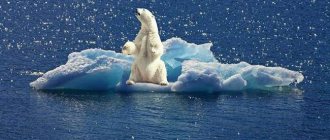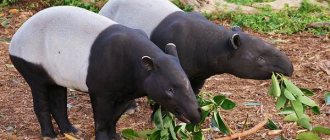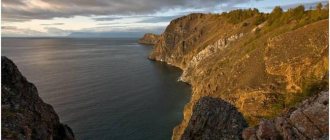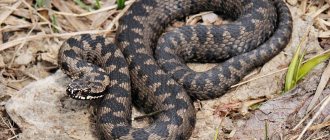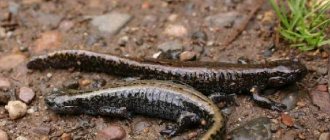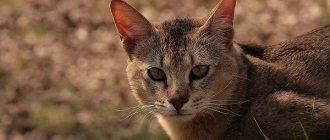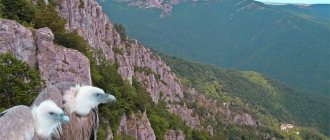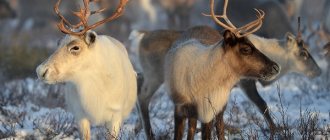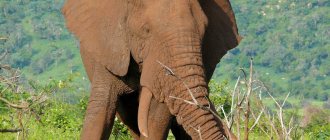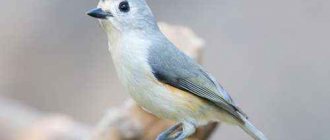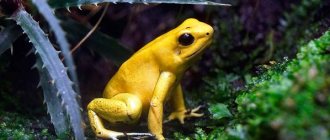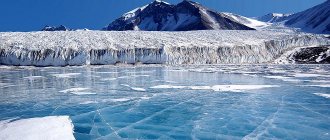The koala is a small, cute, gentle animal that lives only on one continent - Australia.
In the Aboriginal language, the word "koala" means "does not drink." The animal actually practically does not drink water, being content with the moisture contained in eucalyptus leaves.
Its Greco-Latin generic name "Phascolarctos" means "marsupial bear". Our hero was indeed called a bear for a long time, but he is not a bear, and he has nothing to do with bears, except that he looks like a fluffy teddy bear. In fact, the koala is a marsupial; it is the only modern representative of the Koala family (Phascolarctidae).
Today the koala is the most beloved marsupial animal by Australians, one of the recognized symbols of Australia, but this was not always the case. The first European settlers killed millions of these defenseless animals for their thick fur. However, deforestation of eucalyptus forests, drought and fires posed an even greater threat to the survival of the species.
The threat to koalas peaked in 1924, when more than 2 million pelts were exported. By that time, the animals had disappeared from South Australia and most areas of Victoria and New South Wales. As a result of public protest, a hunting ban was introduced starting in 1944, and only 10 years later their population began to gradually recover.
Currently, in a number of areas, particularly in the south of its range, the koala has again become a common species, and the IUCN lists this animal as being of least concern. However, intensive deforestation poses a threat to northern populations.
Marsupials of Australia
Australian marsupials are distinguished by the presence of a skin fold on the abdomen. The fabrics form a kind of pocket. Females have nipples inside it. In the old days, scientists believed that baby marsupials developed on them, like apples on branches.
In fact, the offspring matures in the mother's womb, but is born prematurely. A bag serves as a kind of hospital. In it, animals begin to see, begin to hear, and grow hair.
quokka
Lights up the animal world of Australia with her smile. The corners of the quokka's mouth are turned up. The front teeth stick out a little. It seems that you are looking at a large rodent. However, zoologists classify the animal as a kangaroo. Compared to ordinary quokkas, the quokka is a miniature creature, weighing about 3.5 kilos.
Quokkas inhabit islands near the continent, not Australia itself. On the mainland, smiling animals are destroyed by dogs, cats and foxes brought by settlers.
The structure of the mouth creates the appearance of a smile on the quokka's face
common kangaroo
When James Cook saw the kangaroo, the traveler decided that this was a two-headed animal. A baby was sticking out of the animal's pouch. They did not come up with a new name for the animal. Local aborigines called the wonderful creature “kangaroo”. The Europeans changed it a little.
There are no indigenous predators in Australia. However, this does not mean that the animals of the continent are harmless. Kangaroos, for example, “kick” horses. Cases of death from accidental blows from marsupials have been recorded. The front legs of a kangaroo are shortened and weak, but the hind legs are jumping and powerful.
Koala
Lives in the east and south of Australia. They were also found in the west, but were exterminated. The ancestors of koalas became extinct as a result of natural selection. About 30 million years ago, there lived a copy of the modern marsupial, but 28 times larger. During natural selection, the species became smaller.
Modern koalas do not exceed 70 centimeters in height and weigh about 10 kilograms. Moreover, males are 2 times larger than females.
Koalas have a papillary pattern on their toe pads. Marsupials leave imprints, just like monkeys and humans. Other animals do not have a papillary pattern. Considering that the koala is the simplest mammal, the presence of the evolutionary trait is a mystery to scientists.
Koala has human fingerprints
Wallaby
Belongs to the kangaroo order. By the way, there are 69 species of animals. Only one of them, called ordinary, is a symbol of Australia . The animal is not a state sign. The symbol relates more to the military and sports fields. Suffice it to recall a boxing kangaroo in red gloves.
Australian pilots first depicted it on the fuselages of their aircraft. This happened in 1941. Afterwards, the emblem began to be used at sporting events.
Wallaby does not look as warlike and athletic as giant individuals. The animal does not exceed 70 centimeters in height and weighs no more than 20 kilograms. Accordingly, the wallaby is a medium-sized kangaroo.
There are 15 subspecies. Many of them are on the verge of extinction. Striped wallabies, for example, remain on only two islands off the west coast of Australia.
The wallaby is a “relative” of the kangaroo, only smaller in size.
Wombat
Outwardly it resembles a little bear cub. Its diminutiveness is relative. Representatives of one of the three species of wombat reach a length of 120 centimeters and weigh 45 kilos. These Australian marsupials are compact and have powerful paws with large claws. This helps with digging. At the same time, the closest relatives of wombats, koalas, prefer to spend time in trees.
Wombats are the largest among burrowing mammals. The underground passages are also large. Even people climb into them. They are the main enemies of wombats.
Marsupials dig burrows near farms. Dingo dogs make their way through the passages to the birds and livestock. By destroying “intermediaries”, people protect livestock from predators. Five species of wombats have already been extirpated. Another one is on the verge of extinction.
Wombat marsupial rodent of Australia
Marsupial flying squirrel
It is not related to squirrels, but there are external similarities, in particular the size of the animals, their manner of jumping between trees. On them, the flying squirrel can be seen in the forests of northern and eastern Australia. Animals live on eucalyptus trees. Marsupial flying squirrels jump between their branches, covering up to 150 meters horizontally.
Flying squirrels are endemic animals of Australia , like other marsupials, and are not found outside its borders. Animals are active at night. They live in flocks of 15-30 individuals.
Given the small size of flying squirrels, their premature babies are almost invisible, each weighing about 0.19 grams. Babies reach a weight of several grams after 2 months of being in their mother’s pouch.
Tasmanian devil
One of Australia's rare predators. Interesting animals have absurdly large heads. This increases the bite force per unit of body weight. Tasmanian devils even snack on traps. The animals weigh no more than 12 kilos, and their length rarely exceeds 70 centimeters.
The Tasmanian devil's dense body appears awkward. However, the marsupial is dexterous, flexible, and excellent at climbing trees. From their branches, predators often rush at victims. They become snakes, insects, even small kangaroos.
The devil also catches birds. The predator eats its victims, as they say, with its giblets, even digesting wool, feathers and bones.
The Tasmanian devil got its name from the sounds it makes.
Bandicoot
Outwardly it resembles a long-eared rat. The muzzle of the animal is cone-shaped and long. The marsupial weighs approximately 2.5 kilograms and reaches a length of 50 centimeters. The bandicoot maintains its weight by eating both animal and plant foods.
Bandicoots are sometimes called marsupial badgers. There are 21 species in the family. There were 24, but 3 died out. Several more are on the verge of extinction. However, Australian bandicoots are not related to Indian bandicoots. The latter are rodents. Australian animals are part of the marsupial family.
Marsupials of Australia are divided into 5 classes. These are predatory animals with pouches, moles, anteaters, wolves, bears. Europeans gave them names, comparing them with animals known to them. In fact, among marsupials there are no bears, no wolves, no moles.
Koala habitats
The koala is a marsupial, and it lives, of course, in Australia, as well as on neighboring islands (except Tasmania). Marsupial bears choose places closer to water, since tropical forests are located there - the traditional habitat of koalas. Marsupial bears live in the south, east and slightly north of mainland Australia.
The photographer caught a rare moment when a koala decided to “get its throat wet” in a country pool.
The koala lives in humid subtropical, tropical and subequatorial forests, where a lot of eucalyptus grows - the koala's only source of nutrition.
These animals rarely descend to the ground, only to move to the next thicket of eucalyptus.
Monotremes of Australia
The name of the family is due to its anatomical structure. The intestines and urogenital sinus extend into the cloaca, like in birds. Monotremes even lay eggs, but they are classified as mammals.
These are the animals that live in Australia . They appeared on the planet approximately 110 million years ago. Dinosaurs are already extinct. Monotreme mammals were the first to occupy the empty niche.
Platypus
In the photo, the animals of Australia of the order Monotremes are vaguely similar to beavers. This is what English naturalists decided at the end of the 17th century. Having received a platypus skin from Australia, they decided that what they were looking at was, as they put it today, a fake. George Shaw proved the opposite. A naturalist captured a beaver with a duck's nose in nature.
The platypus has webbed feet. By straightening them, the animal swims. Picking up membranes, the animal exposes its claws, effectively digging holes. The strength of the hind legs of a monotreme is not enough to “plow” the earth.” The second limbs are useful only when walking and swimming, working like a caudal fin.
Something between a porcupine and a hedgehog. It's external. In fact, the species are not related to the echidna. Unlike hedgehogs and porcupines, she has no teeth. The tiny mouth is located at the end of the monotreme's elongated, thin snout. A long tongue extends from the mouth. Here the echidna resembles an anteater and also feeds on hymenoptera.
The echidna has long claws on its front paws. Animals, like platypuses, do not dig the ground. Claws are needed to destroy anthills and termite mounds. They are attacked by echidnas of two kinds. The third became extinct, originating approximately 180 million years ago.
Oviparous
Monotremes, or oviparous animals, are the only mammals that reproduce by laying eggs. Representatives of this order, the platypus and the echidna, live in Australia.
Echidna
This unusual medium-sized animal (body weight up to 6 kg) lives in forests, shrub-steppe landscapes, and sandy plains. Leads a twilight and nocturnal solitary lifestyle. Each individual has its own hunting area. If there is enough food, the echidna is active all year round, but if there is a lack of it, it can fall into torpor even in the summer.
The echidna's diet consists of small insects, mainly ants and termites. The animal collects prey with its long sticky tongue.
Platypus
The platypus lives near rivers, lakes and mountain streams in Eastern Australia, spending most of its time in the water. And its whole appearance speaks of adaptation to a semi-aquatic lifestyle. The body is flattened, covered with short thick fur. The head ends in a “duck beak” about 7 cm long, penetrated by the endings of nerve fibers. The structure of the beak allows the platypus to use it to detect prey. The ear openings open next to the small eyes. Five-fingered limbs with a swimming membrane. There is a spur on the hind legs into which the duct of the poisonous gland opens. The tail is flat and quite powerful. The bag is missing.
The diet is based on larvae of aquatic insects, small fish, crustaceans, mollusks, etc.
Chiroptera of Australia
There are so many bats in Australia that in 2016, authorities declared a state of emergency when hordes of bats descended on Batmans Bay. This is a resort town in the country. Due to the invasion of bats, the streets and beaches were covered with droppings, and there were power outages.
As a result, property prices in the resort fell. Travelers were frightened not only by the number of animals, but also by their size. Australia's bats are the largest in the world, with a wingspan of one and a half meters and a weight of about a kilogram.
Flying foxes
They are compared to foxes due to their reddish tone, sharp muzzles and large size. Bats reach a length of 40 centimeters. Flying foxes feed only on fruits and berries. Mice enjoy the juice of the fruit. The animals spit out the dehydrated pulp.
Flying foxes are active at night. So, having “flooded” Batmans Bay, the animals also did not allow people to sleep. Australian bats, unlike true bats, do not have echolocation “equipment.” Foxes have average orientation in space.
Koala breeding
Koalas, which always live alone, gather in groups only during the breeding season. Most often, such a group consists of one male and two to five (and sometimes more) females. Koalas mate in trees. Koalas breed once a year or once every two years.
A sleeping koala feels comfortable on a branch.
Pregnancy in marsupial bears lasts about a month. Usually only one baby is born, about 1.5 cm long and weighing no more than 6 g. Since the koala is a marsupial, the pouch is used for quite a long time when carrying a child - about six months. At 30 weeks, when the cub has grown a little, he can already eat the liquid excrement of his parents (this is necessary, since it contains the necessary substances for normal digestion). After some time, the koalas grow up completely and begin to live their own lives.
Female marsupial bear with cub.
Reptiles of Australia
Snake-necked turtle
With a 30-centimeter shell, the turtle has a neck covered with tubercles of the same length. The head at the end seems tiny, like a snake. Snake and habits. Caught Australian turtles wriggle at the expense of their necks and bite their offenders, although they are not poisonous.
Snake-necked turtles are animals of natural areas of Australia , located throughout the continent and on nearby islands. The shell of animals expands significantly at the back. Reptiles can be kept in an aquarium. However, long-necked turtles need space. The minimum volume of an aquarium for one individual is 300 liters.
Australian snake lizards
They often lack legs or have underdeveloped ones. These paws are usually too short to be used for walking and have only 2-3 toes. Animal groups differ from snakes by the absence of ear openings. Otherwise, you can’t immediately tell whether you see a lizard or not.
There are 8 species of snake lizards in Australia. All are burrowers, that is, they lead a lifestyle similar to worms. Externally, the animals also somewhat resemble large worms.
Australian tree monitor
They live in trees. Hence the name. The animal is endemic and reaches 35 centimeters in length. A third of them are in the tail. The lizard weighs approximately 80 grams. The back of the tree monitor is brown. This allows them to camouflage themselves on branches. The sides and belly of the lizard are gray.
Fat-tailed gecko
An eight-centimeter creature, painted in orange-brown tones and decorated with light dots. The skin has brushes and looks rough. The gecko's tail is shorter than the body, fleshy at the base and pointed at the end.
The fat-tailed gecko has a terrestrial lifestyle. The color of the animal helps it hide among the stones. The reptile chooses variegated rocks in warm colors such as granite and sandstone.
Giant lizards
Their gigantic length is not so much as their width. The body of the animal is always thick and powerful. The length of gigantic lizards is 30-50 centimeters. The tail takes up about a quarter of them.
In some species it is even shorter. An example is the short-tailed skink. Accordingly, giant lizards are a general name for the genus of Australian reptiles.
The smallest among the giants is the 10-centimeter Adelaide lizard. The largest in the genus is the blue-tongued skink, reaching almost 80 centimeters in length.
Black snake
Two-meter endemic to Australia. about animals that they are slender and strong. Only the back and part of the sides of snakes are black. The underparts of the animals are reddish. This is the color of smooth, symmetrical scales.
Black snakes are dangerous animals in Australia and have poisonous teeth. There are two of them, but only one performs the functions. The second is a reserve in case the first is lost or damaged.
Viper-shaped death snake
The reptile imitates the appearance and behavior of a viper, but is many times more poisonous. The animal lives on the forest floor, getting lost among the foliage and grasses. The size of the viper-shaped reptile is identical to the prototype, does not exceed a meter, and often extends only 70 centimeters.
Who invented drop bear?
Despite the popularity of the falling bear and its growing international reputation, the origins of this image are unknown. His legend does not seem to have been inspired by any particular popular book or film, for example. The bear's first appearance in an Australian newspaper was an innocuous mention in The Canberra Times in 1982, according to the National Library of Australia.
“Tam, beware of encountering falling bears in the future. Much love, Clint,” the 21st birthday message read. Who Tam and Clint are remains unknown.
Photo: Mythic Australia
Some associate the legend of the falling bear with a routine by legendary Australian comedian and actor Paul Hogan (best known to foreigners as Crocodile Dundee) on his show The Paul Hogan Show, which aired in the 1970s and 1980s. In one of the scenes, the comedian parodied Indiana Jones: while exploring the fictional Goanna Valley, he was attacked by killer koalas. They jumped from the trees and began to maul Hogan - eventually he fell to the ground covered with bears.
However, Mythic Australia's Cote said he remembers a scout leader telling him stories about falling bears in the early 1970s, before Hogan's number aired. “The image of the old falling bear was used in the camp to keep us from leaving the area and not going too far,” he said, adding that he himself was scared by the counselors: they say, if you go into the bushes, the falling bears will get you.
Drop bear has now become a horror story for tourists, but it all apparently began with ghost stories that parents used to scare their children. Not every Australian grew up with the legend of the falling bears, but there are those who remember their parents telling stories about them - especially people who grew up in rural areas or farming communities.
According to Cote, the first visitors to Australia who were frightened by a falling bear were not tourists at all. When he served in the Army in the late 1980s as part of the Survey Corps, he often heard questions from British and US soldiers on training in the Australian bush about how to avoid Australia's famously dangerous snakes and spiders. To this the Australians usually replied: "Forget about snakes and spiders, you have to watch out for falling bears." Cote recalled telling visiting soldiers that the only way to keep bears away was to smear the Australian condiment Vegemite on your face.
“Our Australian soldiers would invariably throw a jar of Vegemite at a visiting soldier and it would take them days to realize that they were putting it on their face and nothing was happening,” he said, laughing.
Birds of Australia
There are about 850 bird species on the continent, 350 of which are endemic. The diversity of birds indicates the richness of the continent's nature and serves as evidence of the low number of predators in Australia. Even the dingo dog is actually not native. The animal was brought to the mainland by Austronesians. They traded with the Australians from 3000 BC.
Emu
It grows up to 170 centimeters in height, weighing more than 50 kilograms. At this weight the bird cannot fly. Too loose feathers and an underdeveloped skeleton also prevent this from being done. But emus run well, reaching speeds of 60-70 kilometers per hour.
An ostrich sees surrounding objects just as clearly when running as when standing. Each step the bird takes is 3 meters long. Emus are not only Australia's largest animals , but also the second largest birds in the world. The championship also belongs to the ostrich, but the African one.
Bush bigfoot
Not found outside Australia. There are about 10 species of bigfoot on the continent. Shrubby is the largest. The animal has a bare head with red skin. There is a yellow patch on the neck. The body is covered with brown-black feathers. The length from head to tail does not exceed 85 centimeters.
The bigfoot has a mixed diet. The feathered one gets it on the ground. Sometimes the bird eats seeds and berries, and sometimes invertebrates.
Australian duck
The bird is 40 centimeters long and weighs about a kilogram. The bird has a blue beak, black head and tail, and a brown body. The white-headed duck is a waterfowl and is a duck.
Among her relatives she stands out for her silence and love of solitude. Australian ducks gather in flocks only during the breeding season.
The Australian duck is endemic with a small population. Therefore, the species is considered endangered. The bird is not included in the Red Book, but is under the supervision of zoologists.
Magellanic penguin
It lives up to its name and does not exceed 30 centimeters in height. The mass of a flightless bird is 1-1.2 kilograms. Another distinctive feature is the blue plumage.
Little penguins are secretive, hiding in burrows and hunting fish at night. Mollusks and crustaceans are also on the animal menu. By the way, there are 13 species of penguins in Australia. The proximity of the continent to the south pole influences. It is a favorite place for penguins. Some species live at the equator, but none are found in the northern hemisphere.
Royal albatross
The largest among flying birds. The bird is also long-lived. The animal's age ends at the age of 6.
The royal albatross weighs about 8 kilograms. The length of the bird is 120 centimeters. The wingspan of the bird exceeds 3 meters.
Australian pelican
The length of the animal exceeds 2 meters. The weight of the bird is 8 kilos. The wingspan is more than 3 meters. The color of the bird is black and white. The pink beak stands out against the contrasting background. He's massive. There is a pronounced feather line between the beak and eyes. It seems that the bird is wearing glasses.
Australian pelicans eat small fish, catching up to 9 kilograms per day.
Bittern
Two feathers resembling horns protrude from the head. For this, the bird of the heron family was nicknamed the water bull. Like other bitterns, it can produce heart-rending sounds, which “form” the basis for the name of the genus.
The bittern is the least numerous on the continent. There are 18 species of herons living on it.
Australian brown hawk
Weighs about 400 grams, and reaches 55 centimeters in length. Despite the name, the bird is found outside the continent, for example, in New Guinea.
The brown hawk is named for its chestnut plumage. The bird's head is gray.
Black cockatoo
The impression is that the body of a raven is connected to the head of a parrot. The bird is black with red cheeks. On the head there is a crest characteristic of a cockatoo.
Black cockatoos are rarely kept in captivity due to their picky eating habits. Serve canary nuts. Outside of Australia the product is expensive and difficult to obtain.
conclusions
The fauna of Australia is very unique. This uniqueness lies primarily in the fact that among mammals marsupials dominate here, while placental mammals predominant in other areas are represented only by rodents and chiropterans. In addition, only the fauna of Australia is characterized by monotremes.
The uniqueness of Australia's fauna is explained by the long isolation under which it developed. The mainland with the adjacent islands lost contact with other continents, apparently, at the end of the Mesozoic, shortly after the separation of New Zealand. Consequently, the Australian fauna ranks second in antiquity after the New Zealand fauna.
- Kangaroo -...
- Where do scorpions live?
- Amazing amphibians
- Jerboas: types,…
- Koala: description,…
- Shrews:...
Insects of Australia
The continent is famous for its large and dangerous insects. Only 10% of them are found outside Australia. The rest are endemic.
Rhino cockroaches
The insect weighs 35 grams and reaches 10 centimeters in length. Externally, the animal is similar to a beetle. The animal's shell is burgundy. Unlike most cockroaches, the rhinoceros does not have wings.
Representatives of the species are found only in North Queensland. Cockroaches inhabit its forests, hiding in leaf litter or digging holes in the sand.
Huntsman
This is a spider. Looks scary, but useful. The animal eats other, poisonous spiders. That's why Australians tolerate Huntsman's love of cars. The spider often gets into cars. For tourists, meeting an animal in a car is a shock.
When the huntsman spreads its legs, the length of the animal is approximately 30 centimeters. The length of the body is equal to 10.
What do bears eat?
Depending on the species, different bears have different diets. So polar bears eat only high-calorie animal food, which allows them to survive in the harsh northern conditions. These are mainly fish and marine animals such as walruses, seals, seals and others living in the northern seas.
Kamchatka bears feed mainly on fish, which allows them to accumulate a lot of fat in a short period of time in order to safely endure the period of hibernation.
Brown bears live in more favorable conditions; they do not need such high-calorie food. Therefore, they prefer plant foods: tree fruits, nuts, berries, mushrooms, foliage and branches of bushes, mushrooms, edible roots, etc. Summer is an opportunity for all bears to replenish their diet with vitamins, so they can often be seen in places where berries grow, they especially love raspberries.
The favorite delicacy of forest bears is honey, for which they climb trees to get honey from wild bees and often destroy hives in apiaries.
If possible, bears do not refuse animal food; these are mainly small animals. Older males hunt large animals such as deer, elk, and wild boar. Sometimes it can catch a bird.
Sloth bears' main diet is termites, which they have adapted to eat as anteaters. Even their muzzle is devoid of hair, and they can fold their lips into a tube to suck termites out of their home.
The Chinese giant panda feeds on bamboo shoots, and the Australian koala eats eucalyptus leaves, in the thickets of which they live constantly.
Fishes of Australia
There are also many endemics among Australian fish. Among them, I highlight 7 especially unusual ones.
A drop
This fish is found near Tasmania. An animal of the deep. Caught in the net with lobsters and crabs. The fish is inedible and rare, and is protected. Outwardly, the inhabitant of the depths resembles a jelly, rather shapeless, whitish, with a nose-like influx, a prominent chin fold, and lips that seem to be turned outward.
The drop has no scales and almost no fins. The length of the animal is 70 centimeters. An adult animal weighs almost 10 kilograms.
Lumpy carpet shark
Among sharks, this is a 90-centimeter baby. The carpet fish is named because it has a flattened body. It is lumpy and brown in color. This allows the animal to get lost among bottom rocks and reefs. A bottom dweller, the lumpy shark feeds on invertebrates. Sometimes bony fish end up on the “table”.
Handfish
People call it the running fish. Found only off the coast of Tasmania, discovered in 2000. The species is rare and is listed in the International Red Book. The fish is called a running fish because it does not swim. The animal runs along the bottom on powerful, paw-like fins.
Rag picker
This is a seahorse. It is covered with soft growths. They sway in the current, like algae. The animal camouflages itself among them because it cannot swim. The only salvation from predators is to get lost in the vegetation. The length of the rag picker is approximately 30 centimeters. The pipit differs from other fish not only in its exotic appearance, but also in the presence of a neck.
Knight fish
It does not exceed 15 centimeters in length and is a living fossil. The body of the inhabitant of Australian waters is wide and covered with armored scales. It was for this reason that the animal was called a knight.
In Russia, knight fish is more often called pine cone. The animal is kept in aquariums, valued not only for its exotic appearance, but also for its peaceful nature.
Pegasus
The lateral fins of the fish have pronounced spine lines. Between them are transparent membranes. The fins are wide, spaced apart. Otherwise, the appearance of the fish is similar to that of seahorses. This is where associations with the pegasus from legends are born.
In the sea, Pegasus feeds on crustaceans and lives at a depth of 100 meters. The species is rare and poorly studied.
In total, the continent is home to 200 thousand species of animals. Of these, 13 were imported from other countries. It is interesting that the country’s coat of arms was also designed outside its borders. The first option was proposed in 1908 by Edward the Seventh.
The King of England decided that would have on its coat of arms . There is an ostrich on one side and a kangaroo on the other. They are considered the main symbols of the continent.
Bears and people
It is in raspberry fields that they most often meet people. But if you do not show a feeling of fear, it is quite possible to part ways with them peacefully, but under no circumstances should you run away, because at these moments the hunting instinct awakens in them, and it is not very easy to escape from a bear. Be that as it may, it is better not to meet bears, so when going to places where they live, it is better to find out from local residents where they were most often seen, and not go there.
Quite often, people try to domesticate little bear cubs left without a mother, because they are very funny, but this does not lead to anything good. Keeping this wild animal at home, even from the very first days, is far from safe. The bear is a strong and dangerous predator, and over time, the animal instinct still awakens in it. For this animal, its home is natural conditions that cannot be replaced. Such experiments do not end well.
Bears are a very large group of animals inhabiting modern nature, which people have destroyed for a long time, and they could completely disappear from our land. Therefore, it is necessary to do everything necessary to preserve them for the future of humanity. For this purpose, many countries have developed programs for the conservation of bears as a species, but the main thing is the attitude of people towards these peculiar animals, equal inhabitants of our planet.
Nutrition
As scientists have found, such a leisurely lifestyle of koalas is not accidental. This is due to their diet. What do koalas eat? Why does nutrition have such an impact on their lifestyle? Knowing where koalas live, it is not difficult to answer these questions. The diet of these animals includes only eucalyptus leaves and shoots, which contain almost no protein. In addition, eucalyptus leaves are deadly for the vast majority of animals. This is due to the huge amount of phenolic compounds they contain.
Interestingly, not all eucalyptus trees are suitable for koalas. In addition, the animals are very selective in choosing leaves: they are good at recognizing the presence of hydrocyanic acid in them, which is dangerous to life. Moreover, animals are able to estimate its dose. In one night, an adult eats more than 500 g of young shoots and leaves. Special bacteria that develop in the intestines help cope with this volume of roughage plant feed.
It is thanks to the special environment that the leaves turn into a nutritious pulp and the proteins necessary for the body are produced. The processed food is stored in the cheek pouches, and to speed up digestion, the koala periodically swallows small pebbles and lumps of earth. Sitting on a peculiar diet of leaves saturated with essential oils, the koala is constantly in a state of mild intoxication, which can explain its “lethargy.”
Another interesting fact: given what koalas eat, it would be natural to assume that the animals drink a lot of liquid. However, this is not true: koalas practically do not drink water, except during particularly hot months. Animals have enough fluid, which they receive from plant food.
Lifestyle
We found out where the koala lives and what it looks like. It's time to tell how these animals live. Koalas are animals that lead a measured and leisurely lifestyle. They sleep almost the entire day (from 18 to 22 hours). Teddy bears are active at night, which lasts no more than two hours. As a rule, this is due to the need to find food for themselves.
It's funny that during the so-called periods of wakefulness, koalas practically do not move: they simply sit on the branches, holding onto the trunk with their forelimbs. At the same time, the koala sometimes shows enviable grace and lightness, deftly jumping from one tree (where all the food has been eaten) to another.
